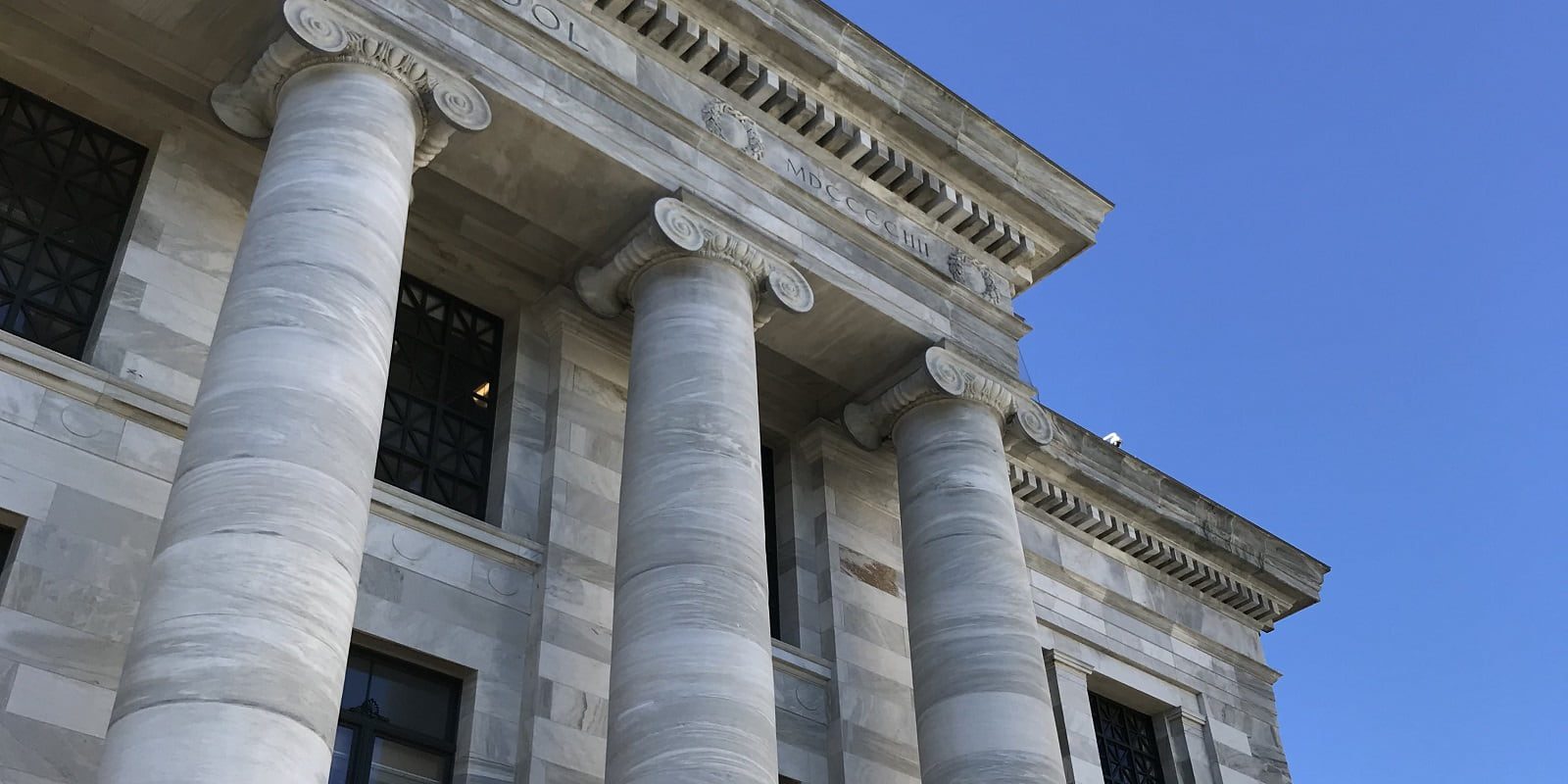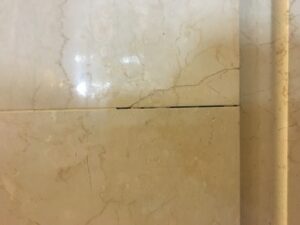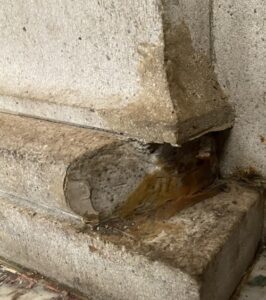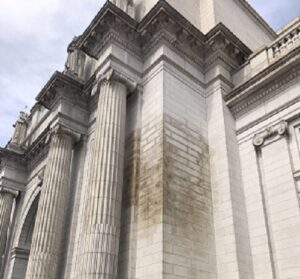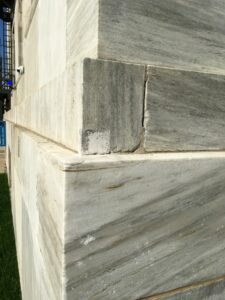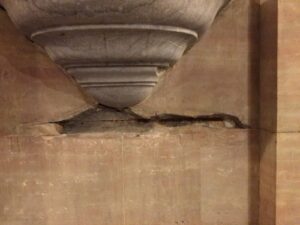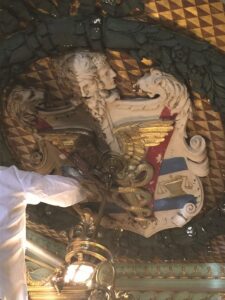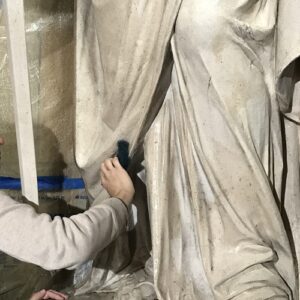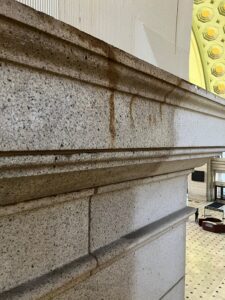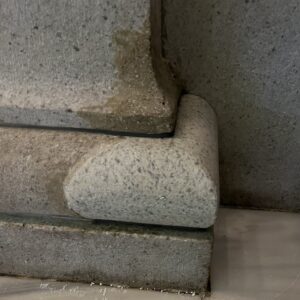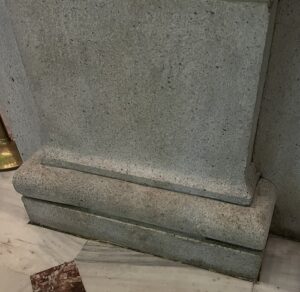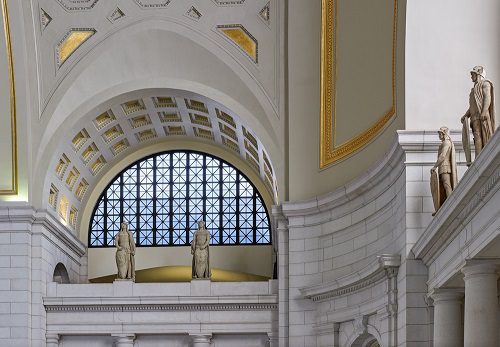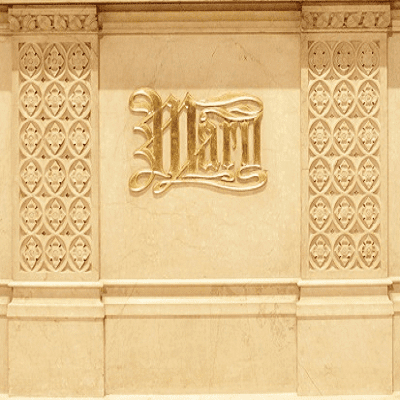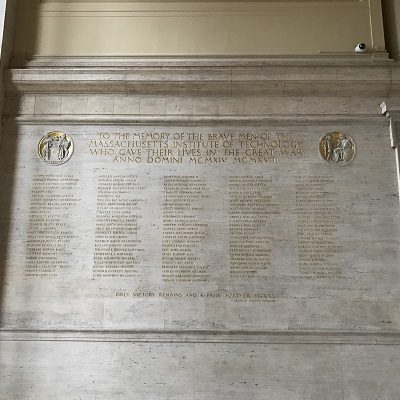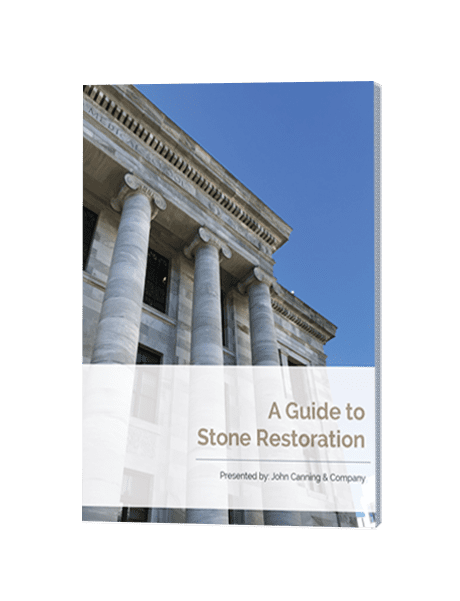Stone has been a magnificent asset to the architectural world since the creation of Egyptian tombs and pyramids. An enormous variety of stones such as limestone, sandstone, marble, and granite have been used since then for both decorative and practical purposes in all types of historic structures throughout the world.
Common Problems
In order to properly protect and care for architectural historic stonework, it is important to be aware of the most common issues that arise.
Cracking
Stone contracts and expands according to the amount of moisture it absorbs and releases. Stone absorbs moisture which freezes and expands resulting in cracks either in the surface of the stone itself, or in the surrounding mortar. If the mortar is not harder than the stone, it will crack as a result of the pressure of stone expansion, if the mortar is harder, it will cause cracking in the stone.
Erosion
Like all material, stonework is susceptible to erosion, especially exterior elements. The softer the stone, the more easily it will erode which is why harder stones are generally used outdoors. Stones differ in hardness due to the type as well as the depth at which the stone was found within the earth’s crust.
Mortar Deterioration
Mortar is used between stones to hold them together and can deteriorate over time due to exposure to moisture, erosion, or stone expansion and contraction. Mortar deterioration is restored through a process called repointing.
Delamination
Delamination of stone takes place when the outer surface of the stone splits into thin layers, which then peel off the face or breaks away.
Pressure from Structure
Often stonework or mortar can start to crack and fail from years of gravitational pressure from above elements. It is of vital importance to notice and repair such stone for safety purposes.
Efflorescence
Efflorescence is a term used for a specific problem that arises over many years of moisture exposition. This happens when excess moisture mixes with salt in the stone or mortar which settles on the surface of the stone, resulting in a powdery appearance.
Examples of common problems that you can encounter with stone.
Preserving
Problems like those iterated above can be avoided altogether by efforts of preservation. The most efficient way to avoid problems is to assess the stone regularly for any signs of deterioration and to be aware of areas exposed to an excessive amount of moisture, since this is the primary cause of stonework wear and tear. Be careful to maintain draining systems and be cautious of drastic changes in temperature within the building as well as the change of weather conditions. Protective sealants are often used to provide lasting durability. Selecting the right sealant for the job will depend on the type of stone as well as a number of other factors.
Cleaning of stone in progress.
Restoring
If problems have been detected, stone can almost always be restored to its former beauty and durability. Let’s take a look at some of the options and process for stone restoration.
Research and Inspection
First, it is vitally important to thoroughly inspect the stonework in order to discover every deficiency and also to understand the history of the stone and its original aesthetic. Once adequate evaluation and documentation have been completed, a proposal is written for treatment method and materials.
Cleaning
Often stonework, before it is repaired, needs a thorough cleaning. Cleaning techniques for historic stone are based on a number of factors, including the type of stone and the stones current condition. Before any procedure is begun, the stone must be adequately assessed. Are there any cracks or signs of instability in the stone? Is there any finish or staining on the surface? What type of stain or imperfection are we looking to remove? These are just a few of the questions that must be answered prior to determining the appropriate cleaning solutions and procedures. Based on the answers obtained, a method should be determined starting with the mildest cleaning solution. Often something as simple as water and a mild detergent will go a long way. Another helpful method is the use of a liquid cleaner or chemical substance called poultice which is mixed with an absorbent and used to draw out imperfections under the surface of the stone.
Repair
The repair of damaged areas follows the cleaning process. Potential repairs include removing and resetting existing stones, sourcing original stone in order to replace damaged stones, replacing just part of a stone which is called a Dutchman repair, and repointing which is the process of repairing stone mortar.
Stone Dutchman repair.
Historic stonework is beautiful and durable and since the method of its care depends on so many factors, the most effective, safe, and efficient way to understand a particular project is to consult a professional.

